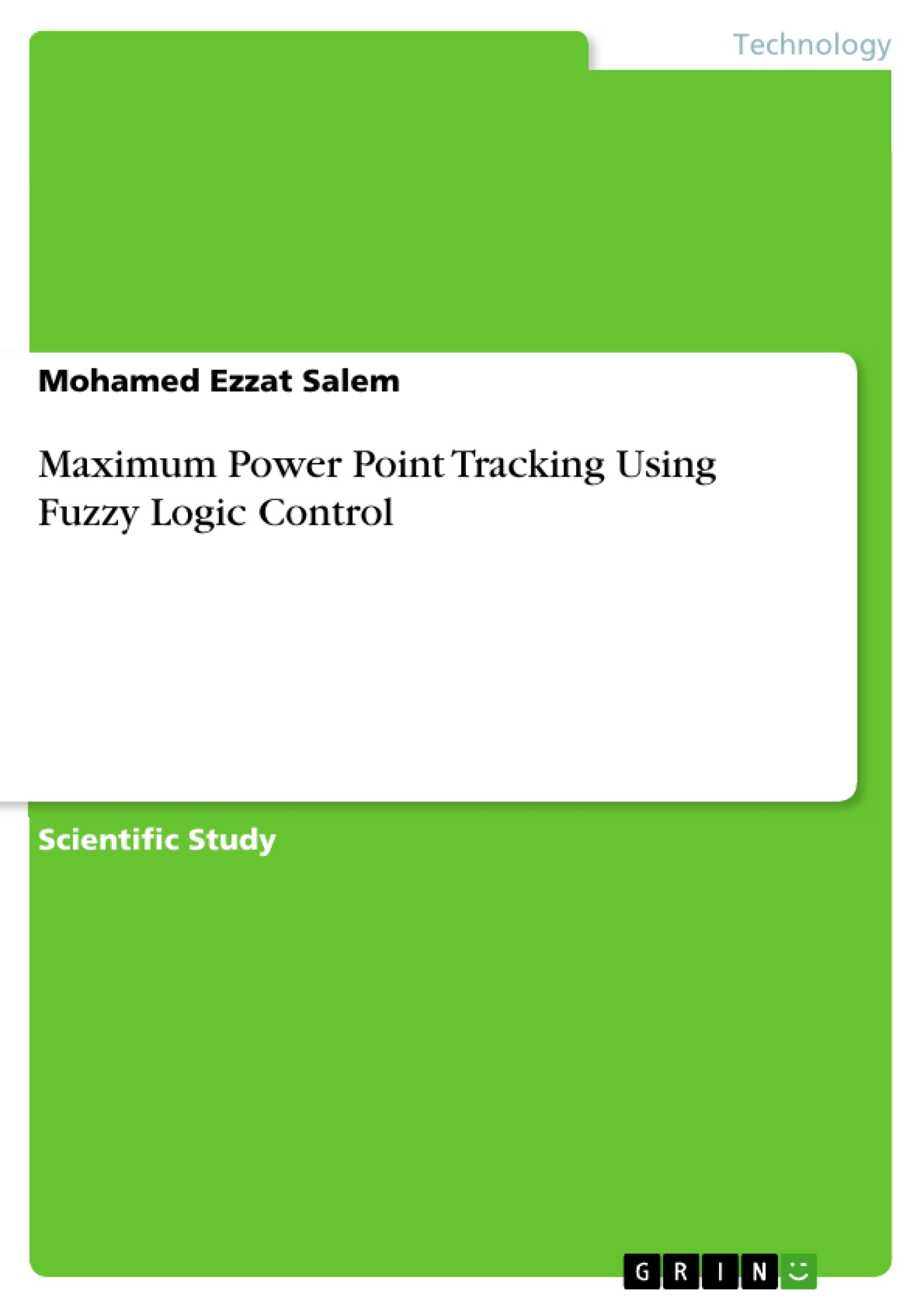This paper proposes an intelligent control method for the maximum power point tracking (MPPT) of a photovoltaic system under variable temperature and insolation conditions. This method uses a fuzzy logic controller applied to a DC-DC converter device. The different steps of the design of this controller are presented together with its simulation. The PV system that I chose to simulate to apply my techniques on it is stand-alone PV water pumping system. Results of this simulation are compared to those obtained by the system without MPPT. They show that the system with MPPT using fuzzy logic controller increase the efficiency of energy production from PV.
Inhaltsverzeichnis (Table of Contents)
- I. INTRODUCTION
- II. MAXIMUM POWER POINT TRACKING ALGORITHMS
- Maximum power point tracking algorithms:
- III. FUZZY LOGIC MPPT CONTROLLER
- A) Fuzzification
- B) Inference Method
- C) Defuzzification
- D) Fuzzy Logic Control Simulation in MATLAB/SIMULINK
- IV. SIMULATION OF PV WATER PUMP SYSTEM WITH MPPT
Zielsetzung und Themenschwerpunkte (Objectives and Key Themes)
This paper aims to present an intelligent control method for maximum power point tracking (MPPT) of a photovoltaic (PV) system under variable temperature and insolation conditions. This method employs a fuzzy logic controller applied to a DC-DC converter device to improve energy conversion efficiency.
- Maximum power point tracking (MPPT) in photovoltaic systems
- Fuzzy logic control (FLC) for MPPT
- Simulation of PV water pumping systems
- Efficiency comparison of systems with and without MPPT
- Application of fuzzy logic controllers in renewable energy systems
Zusammenfassung der Kapitel (Chapter Summaries)
- I. INTRODUCTION: This chapter introduces the problem of water scarcity in arid regions and the potential of stand-alone PV-powered water pumping systems. It highlights the low efficiency of PV modules and the need for MPPT controllers to optimize energy conversion.
- II. MAXIMUM POWER POINT TRACKING ALGORITHMS: This chapter discusses various MPPT control techniques, classifying them based on feedback mechanisms. It outlines different algorithms, including perturbation and observation (P&O), incremental conductance, and intelligent methods like fuzzy logic control.
- III. FUZZY LOGIC MPPT CONTROLLER: This chapter details the fuzzy logic control approach for MPPT. It explains the fuzzification, inference, and defuzzification processes involved. The design of the controller, including input variables, membership functions, and rule base, is presented.
- IV. SIMULATION OF PV WATER PUMP SYSTEM WITH MPPT: This chapter presents the simulation of the PV water pumping system in MATLAB/SIMULINK. It demonstrates the application of the fuzzy logic controller and analyzes the system's performance under different atmospheric conditions.
Schlüsselwörter (Keywords)
This paper focuses on the application of fuzzy logic control (FLC) for maximum power point tracking (MPPT) in photovoltaic (PV) systems. Key themes include the design and simulation of a PV water pumping system, the efficiency comparison of MPPT and non-MPPT systems, and the use of fuzzy logic controllers in renewable energy applications.
- Citar trabajo
- Mohamed Ezzat Salem (Autor), 2004, Maximum Power Point Tracking Using Fuzzy Logic Control, Múnich, GRIN Verlag, https://www.grin.com/document/174104



